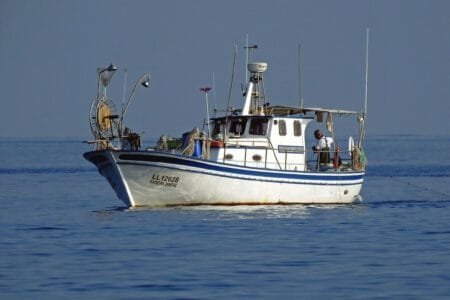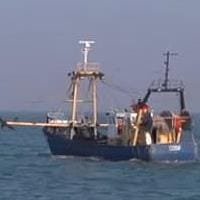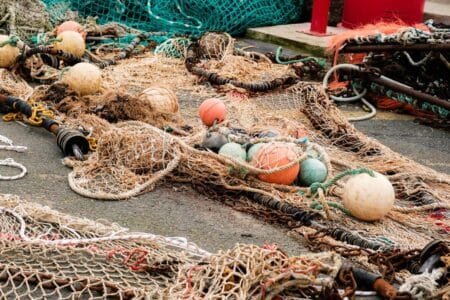The European Union on 11 April made public four ambitious proposals for the next Indian Ocean Tuna Commission (IOTC) session taking place from 8 to 12 May 2023. The objective is to improve the conservation of tuna and the management of fisheries.
Advertisement
What is the Indian Ocean Tuna Commission (IOTC) and what is the EU proposing for the next IOTC session in May?
The Indian Ocean Tuna Commission (IOTC) is the regional fisheries management organisation (RFMO) mandated to manage the fisheries on tuna and tuna-like species in the Indian Ocean and adjacent seas. It was established in 1993 and entered into force in 1996. It is an intergovernmental organisation gathering the countries bordering the Indian Ocean and the countries having an interest in the tuna fisheries in the area. The objectives are to promote cooperation among its members for the conservation and optimal management of the tuna stocks in the area, and to ensure the establishment of sustainable fisheries in the region. To achieve these objectives, IOTC members meet annually, discuss and adopt measures for the conservation and management of tuna and tuna-like species. It also organises special sessions on specific topics, such as the session of February 2023 on Fish Aggregating Devices (FADs).
At the coming IOTC annual session (May 2023), the EU is presenting 4 ambitious proposals to improve the conservation of tuna and the management of fisheries. Along with the new proposals, the EU is tabling an objection to the IOTC Resolution 23/02, taken at the last special session of February 2023, on the management of drifting Fish Aggregating Devices (FADs).
What are regional fisheries management organisations (RFMOs) ?
Countries with fishing interests in a given geographical area form specific RFMOs. The organisations are open both to countries in the region (coastal states’) and countries that have interests in those fisheries (distant water fishing nations’). While some RFMOs have a purely advisory role, most have management powers to set catch and fishing effort limits, technical measures, and control obligations. Today, RFMOs cover the majority of the world’s seas. They can broadly be divided into RFMOs focussing only on the management of highly migratory fish stocks, notably tuna, (tuna-RFMOs’) such as IOTC and RFMOs that manage other fish stocks (i.e. pelagic or demersal) in a more specific area.The EU, represented by the Commission, plays an active global role by participating to 18 RFMOs. This makes the EU one of the most prominent actors in RFMOs worldwide, enabling it to promote international ocean governance and the sustainability of international fisheries.
What is a FAD?
A FAD is a device used to attract tuna and/or other fish in order to facilitate their capture. As fish naturally gather under objects drifting at sea, FADs use this mechanism to aggregate larger numbers of targeted species. FAD designs may vary and are often composed of a raft and subsurface part. A FAD can be drifting and tracked by means of a satellite buoy or anchored to the bottom of the seafloor. Their use depends on the needs of the fleets using them. Purse seine vessels use a majority of drifting FADs in the high seas, while coastal communities tend to use anchored FADs that are located closer to the coastline.
Why are FADs used?
FADs have considerable benefits and are used in many fisheries. FADs increase the catchability of certain species that gather under them. Using FADs reduces the effort needed to fish thus reducing the time at sea and fuel necessary to fish. For example, without FADs, purse seine vessels which fish large quantities of fish at once, would spend more time at sea looking for large schools of tuna, with longer fuel-intensive operations and uncertain results. Therefore, using FADs has clear benefits in lowering the emission of greenhouse gases and the cost of fishing operations.
Why is the EU defending the use of FADs despite their impact on the environment?
In comparison to other fishing methods which have comparable impacts, the EU does not believe that the use of FADs should be overly restricted but their impact on the environment should be minimised.
Therefore, the EU aims, through its proposal to the IOTC, to reduce the impact of drifting FADs, in particular their impact on fishing stocks, the ecosystem and their contribution to marine litter. The measures proposed aim to introduce the use of biodegradable FADs, to reduce the loss of drifting FADs or even limit the number of deployed devices. If adopted, this proposal should be an important step in improving the sustainability of fisheries using drifting FADs, which should be the management objective across all gears.
Why is the EU allowing the use of FADs despite the marine pollution it creates?
The EU is proposing to gradually introduce the use of biodegradable materials in the construction of drifting FADs. In this step-wise approach, FADs should become gradually more biodegradable, forbidding the use of the most polluting models. By 2027, with the development of new technologies, FADs deployed in the Indian Ocean shall be fully biodegradable.
In the meantime, the measures introduced by the EU proposal to the annual meeting of the IOTC aim to reduce the loss of FADs and their contribution to marine pollution. The proposal, should it be adopted, will reduce the number of buoys deployed and acquired, impose the marking of drifting FADs and impose reporting the loss of a drifting FAD.
Why is the EU not proposing a lower number of FADs?
The EU is proposing a progressive and significant reduction of deployed FADs to 240 (down from 300) per vessel, representing the lowest number of deployable FADs ever agreed in any ocean.
In its management objectives, the EU is taking into account the needs of all fleets to progressively adapt. It is also addressing potential overly negative impacts of a low limit of FADs which would lead to higher greenhouse gases emissions and put in question the ability of the fleet to efficiently operate.
It is to be noted, though, that FADs significantly contribute to the efficiency of fishing operations, by reducing the time spent by the fleet at sea searching for fishing ground, thus reducing fuel consumption and CO2 emission, two important aspects of the environmental impact of fishing operations.
Source: European Commission





